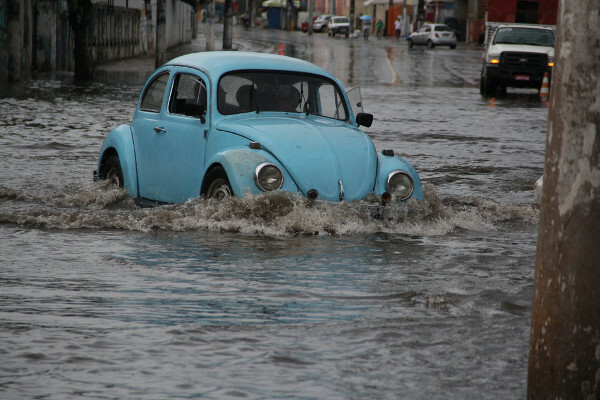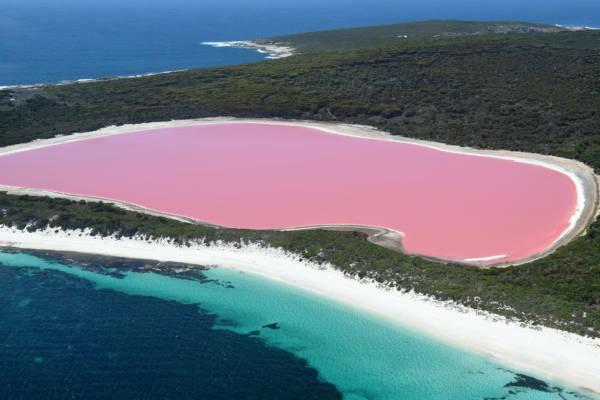At floods they are natural phenomena, but they can be intensified by human practices in the space of cities. The problem of floods has become something common in the lives of populations in some cities. Unfortunately, every year it's the same thing: between December and February, the news is taken by problems related to the elevation of water courses and the flooding of houses and streets, setting off a series of tragedies, which, almost always, could be avoided.
Read too: Urban socio-environmental problems
Causes of Floods
For didactic purposes, we have divided the occurrence of floods into two types of main causes: natural and anthropic, as we are talking about a common phenomenon in nature, but which is intensified by human action.

Natural Causes of Floods
In general, perennial rivers – that is, those that never dry during the year – usually have two types of bed: a smaller one and main, where the water runs most of the time, and a larger and complementary one, which is only flooded in periods of flooded. This manifestation is more common in flat areas, also called floodplains. Note the following scheme:

In the representation above, we have a cross-section of the course of a river in which its largest and smallest beds are represented. Eventually, depending on the watercourse and local and meteorological conditions, the larger bed is flooded, causing floods in its area. The period in which this occurs varies from river to river and, when it is not very common, the river bed can occupy some houses, villages and even cities, which are surprised by occasional natural floods. In some cases, entire cities are underwater.
Read too: Environmental impacts of river transposition
Do not stop now... There's more after the advertising ;)
Anthropogenic causes of floods
Human interference over watercourses, causing floods and floods, occurs in the most diverse ways. In extreme but less common cases, such situations can be related to the breaking of dikes and dams, which can cause serious damage to society. But, almost always, this issue is linked to the misuse of urban space.
One problem that doesn't seem to have a quick fix is the high rate of pollution, caused both by the lack of awareness on the part of the population and by inefficient systems of garbage collection or trash distribution throughout the city. Furthermore, there are problems caused by pollution generated by companies and other bodies. With that, the clogging of manholes, that would be responsible for containing part of the water that raises the level of rivers. In addition, the waste generated is carried away by the floods and contributes even more to increasing the volume of water.
The occurrence of floods in cities can also be related to problems in drainage systems. Sometimes, there are no manholes or other constructions that would be responsible for containing or diverting the water that flows into the rivers, causing them to flood. In addition, only the construction of manholes and drainage systems may not be enough, because other human actions can gradually increase the flow of runoff over the years, making the existing drainages unable to meet the entire demand.

Another question is the irregular or disorderly occupation of geographic space. As we explained, some areas correspond to the larger bed of a river that sporadically floods. With the irregular occupation of these areas - often caused by the lack of adequate planning - people are subject to the occurrence of floods. In addition removal of vegetation that composes the surroundings of the river can intensify the process, as it would have the function of retaining part of the sediments that go to the bed and increase the water level.
Despite all the problems mentioned above, the main cause of the floods is, without a doubt, the soil waterproofing. With the paving of the streets and the cementing of yards and sidewalks, most of the water, which should infiltrate into the soil, it runs on the surface, causing increased runoff and elevation of the rivers. In addition, the waterproofing contributes to the increase in the speed of this flow, causing erosions and causing other types of urban environmental disasters.
Read too: The relationship between environmental impacts and the emergence of diseases
How to fight floods?
There are numerous measures to combat floods. The city of Belo Horizonte, for example, hired, in October 2013, some “scouts”, who are employees in charge of detecting the beginning of flooding in risk areas. They would have the function of minimizing the effects of the “lightning flood”, which occurs in a very short period of time. Other actions involve the dam construction it's the desilting of river beds, in which all sediments existing at the bottom of water courses are removed, increasing their depth.
But all these measures are palliative, that is, they are just to minimize or combat an already existing situation. The best way to deal with this problem, in fact, is to carry out proper prevention, which can occur through measures such as these:
- Construction of efficient drainage systems;
- Eviction from risk areas;
- Creation of forest reserves on riverbanks;
- Decrease in pollution and waste generation rates;
- More consistent urban planning.
The problem of floods is chronic in many Brazilian cities, especially Rio de Janeiro. The capital of Rio de Janeiro always appears in the news with occurrences of this type in periods of rain, in addition to other cities that also suffer from the same situation. Floods, in addition to material damage, can cause diseases such as leptospirosis. So it's also a matter of public health.
Image credits:
[1] Dabravolska Donatas / Shutterstock.com
[2] Joa Souza / Shutterstock.com
By Rodolfo Alves Pena
Graduated in Geography


